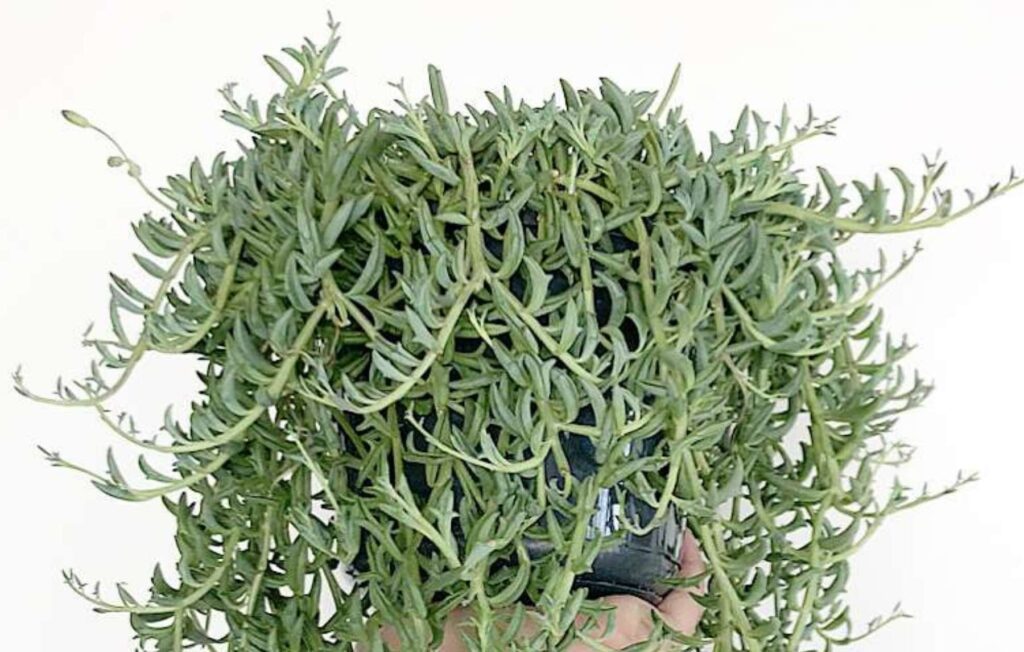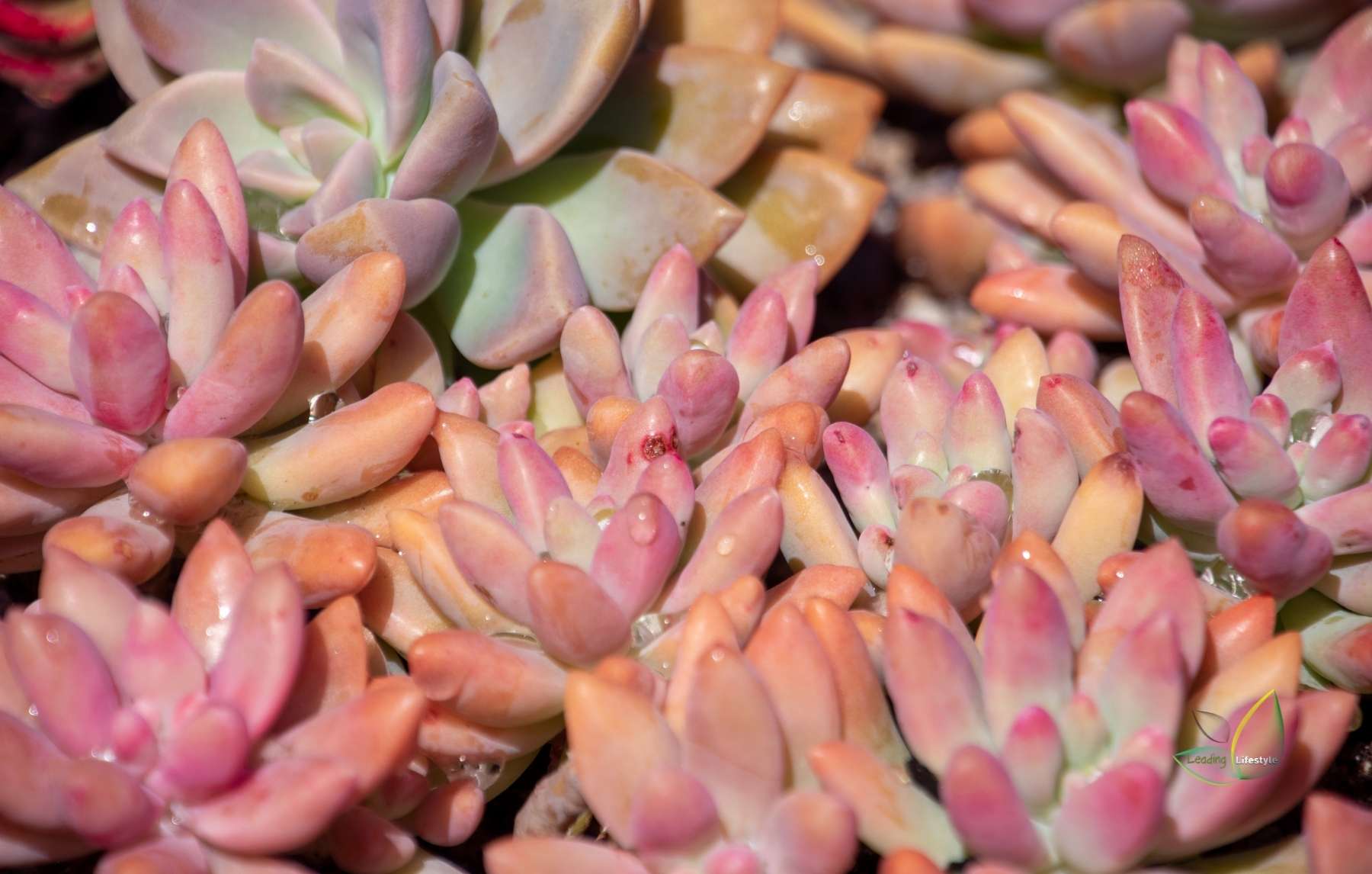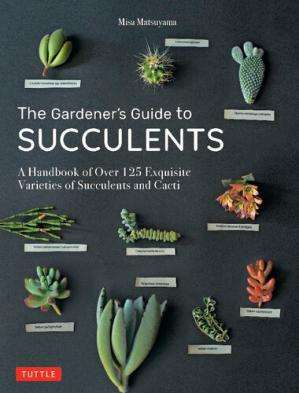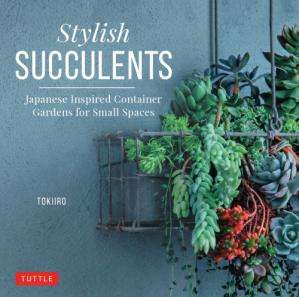String Succulents appear to be gaining in popularity. Many succulent collectors and home designers prize them for their beautiful intricate form.
What exactly are String Succulents?
As the name implies, their growth habit forms creeping strings or chains. String Succulents have pendant stems and fleshy green leaves, among other characteristics. As a result, they’re ideal for both indoor and outdoor hanging displays and vertical gardens and wall pockets.
String Succulents are generally cared for in the same manner as other succulents. They differ in appearance, stem and leaf development, form, texture, color, size, and blooms, among other characteristics. Some are upright, while others have pendant stems. The stems are created by multiplying rows of leaves or by forming a vine.
These plants are low-maintenance and, on top of that, they look lovely as decorations. Here are the top ten string succulents to start or add to your collection.
Dischidia nummularia, also known as String of Nickels
Dischidia nummularia is an endophytic, small, slow-growing evergreen climber with slender stems, reaching 10-30 feet high. In some parts of Australia, it is known as a “bush tomato” because it looks somewhat like a tomato. Young leaves are covered in a whitish powder.
Flower:
Flowers are usually white to yellowish-white. Flowers bloom in the spring. Flowers are tiny and grow in clusters at the ends of branches. Each cluster contains 10-50 individual flowers. The flowers are small, reverse, round like small coins hanging down from a string. It is native to Australia’s and Asia’s tropical regions.
Leaves:
Leaves are tiny and round like coins, growing on a stem that extends from the ground.
Growing Conditions:
Dischidia nummularia grows best in moist, shady areas in full sun. It can be grown in the ground, hanging on a tree, or in pots. It needs little care and water.
Light:
The light needs to be indirect. The ideal temperature is 18° to 25°C. If the temperature is too high, the leaves become wilted. If it is too low, the leaves dry out.
Watering:
Water the plant regularly, preferably using a watering can. Water only when the soil dries up in the summer; otherwise, the leaves will get mushy. It is best to do this in the morning. In winter, water daily or every other day. The plant must receive enough water so that the soil does not remain permanently wet.
Feeding:
In summer, feed the plant with fertilizer. It is preferable if you perform this at least once a month.
Propagation:
Propagate the plant by removing the roots and planting them in a pot with peat and compost. Alternatively, you can sow the seeds directly in the pot.
Mature Dischidia nummularia plants with leaves up to 2 cm in diameter.
Potting and transplanting:
The pot must have a drainage hole. The plant requires lots of air, so it is important to give it sufficient room.
To conclude: this plant grows best in moist, shady areas in full sun. It is quite easy to grow, requiring little care and water. It can be easily propagated from seed or cuttings. Dischidia nummularia is one of the most popular houseplants in Europe and America.
Curio citriformis, also known as the String of Tears
Curio citriformis, formerly Senecio citriformis, is a one-of-a-kind, slow-growing succulent with erect and trailing stems and teardrop-shaped leaves. It is indigenous to South Africa, Lesotho, and Swaziland. The leaves range from soft green to deep green and have transparent, longitudinal stripes depending on the season. Flowers are small, creamy-yellow, and appear on thin, wiry stalks from late summer to winter.
Curio Citriformis (Senecio citriformis) is an unusual, hardy succulent that blooms in shades of yellow or white, making it perfect for adding color to any garden. The plant grows naturally in hot summers, including parts of California, Arizona, and New Mexico.
Planting & Care:
Soil: Average Soil
Sunlight: Full Sun
Moisture: Regular watering
Temperature: 68-85°F
Fertilizer:
Apply a balanced fertilizer when the plant is actively growing.
Cut back plants as needed. Plants should be allowed to dry out between waterings.
Do not use any fertilizers or pesticides near water sources.
Pests and Diseases:
There are no known insect or disease problems.
Propagation:
Seedlings are slow to germinate, and it takes 6-8 weeks to produce roots.
Transplant seedlings into the garden when the soil is warm, and all danger of frost has passed.
Plant in well-drained soil. Grow in full sun to partial shade. Water sparingly during hot weather. Prune after bloom.
Propagate by division.
To stimulate bushy growth, pinch out the ends of the stems.
Repot in spring or fall. This variety does not like to be transplanted.
Foliage:
The foliage of Curio citriformis is soft, wiry, and evergreen.
Bloom:
This variety is known for its late-season bloom. The flower stalks are about 1/2″ long and have a creamy yellow color.
Bloom Season: Spring
Curio rowleyanus, known as String of Pearls or String of Beads

The curio rowleyanus is a member of the sunflower family (Asteraceae) and is native to the arid regions of southwestern Africa, including Namibia, Angola, Botswana, Zambia, Zimbabwe, and South Africa.
It is a drought-tolerant, low-growing succulent that grows to between 20-50 cm tall. It can be distinguished by the long, narrow, pea-shaped leaves, which are also very hairy, and are about 4-7 cm long.
The flowers are very small and white or nearly white and occur in a dense, brush-like cluster at the tip of the stem. They bloom from May to August.
Cultivation:
The curio rowleyanus is a very easy-to-grow plant that should be planted in full sun and given lots of water, which will keep it happy and healthy.
Propagation:
The curio rowleyanus is propagated by seeds, which should be collected in the autumn, dried, and stored in an airtight container.
Curio radicans, known as String of Fishhooks or String of Banana.

Curio radicans, formerly Senecio radicans, is a fast-growing succulent with numerous glossy, banana-shaped foliage tendrils. It is indigenous to South Africa. Flowers are small, white, and cinnamon-scented and bloom in late winter or early spring. It is relatively hardy and simple to grow, making it an excellent choice for beginning gardeners.
Senecio radicans is not as common as other Senecios, but it is easy to propagate from seed. The flowers of Curio radicans. It prefers full sun and well-drained soil.
Common as a wildflower in the Kalahari desert of southern Africa, this plant was first cultivated in Europe by 17th-century herbalists. Curio radicans is one of the most drought-tolerant, heat tolerant, and frost tolerant plants you can grow.
The name “curio” comes from the Latin word for curiosity, which is why this plant has been given the botanical name Senecio radicans. The Latin name means “turning back,” so this is a plant that will turn itself around when it is in danger of dying out.
Aromas:
There is a fresh, fruity aroma with a hint of citrus and a sweet, spicy, cinnamony smell.
Flowers:
This is an attractive, low-growing, white, pink, or lavender flower that is borne in dense clusters on the upper side of its stems. The flowers have a very strong scent that is described as fruity, sweet, and spicy.
Leaves:
Curio radicans leaves are shaped like a banana. They are about 1/4 inch long and are covered with a fine down of soft hairs that help to keep them cool.
Cultivation
Propagate by cuttings, division, or seeds.
Curio herreanus, known as String of Watermelons or String of Beads
Curio herreanus is a stunning trailing succulent native to Namibia and South Africa. It was previously known as Senecio herreanus or Senecio herreianus.
It has trailing stems and leaves that are oval, pointed, and bead-like. They are lined with fine purple stripes and coated with transparent “leaf windows,” which allow the plant to absorb more sunlight.
The flowers are small, white to nearly white, brush-like, and appear on long peduncles from spring to fall.
This plant blooms so late in the season that it is often confused for Senecio madagascariensis (which blooms much earlier).
Cultivation Curio herreanus prefers full sun and well-drained soil. It should be planted where it can get some sunlight, but not too much.
It is best to give the plant a little extra water during the dry season.
To propagate, cut off the flowering stem at its base and remove the roots from the center.
Transplant into pots with a mixture of potting soil and sand, and then plant in your garden.
Propagation
You can propagate this plant from seed or by cutting pieces from your established plants. Start seeds in individual containers, like small pots or trays, and keep them warm and moist until they germinate.
If you have any seedlings growing after four weeks, move them into larger containers or a greenhouse so they can grow bigger and faster. You can also take cuttings in late winter.
Take a leaf from an established plant, place it on a dampened surface, and cover it with plastic wrap or a moist paper towel. Keep the leaves humid by misting them periodically. When the new growth starts, cut it off, leaving about 1/2″ of the stem.
Peperomia prostrata, often known as the Turtle String
Peperomia prostrata is a small, slow-growing vine native to the Brazilian rainforest. Because of its small size and delicate leaves, it is ideal for container gardens and terrariums. The leaves range from dark green to purple and have a lovely pattern of white veins. Flowers are small, cream-colored blooms on long spikes.
Peperomias are not easy to grow, in our opinion. But if you have the right space and conditions, they make excellent indoor plants.
Growing Tips:
Peperomias do well in temperatures between 60-80 degrees Fahrenheit. They don’t like direct sunlight or extreme humidity. For best results, please place them in indirect light with bright but not direct sunshine. When the soil is arid to the touch, water it.
Repot your peperomias every two years or so, using a peperomia mix or potting soil that drains well. Be sure to use a peperomia mix that has been tested for peperomias. This ensures that it drains properly.
The plants will become healthier and stronger if you provide them with adequate drainage. If you have a terrarium, make sure that your peperomias are in a spot where they can get adequate moisture. If you don’t, they may get very thirsty.
It would be best if you also kept an eye out for pests like aphids or mealybugs. These can damage the leaves and flowers of the plant. As you can see, there are many different species of peperomia, and they all have their unique characteristics.
Senecio hippogriffo' known as Dolphin Necklace or String of Dolphins
Senecio’Senecio’ Hippogriff,” also acknowledged as Curio x peregrinus or Senecio x peregrinus is a rare succulent with leaves that resemble tiny, jumping dolphins. They become more and more similar as they grow, perfecting themselves as an impressive potted plant. Look for small white flowers that smell like cinnamon in the fall.
”Senecio” ”Hippogriff” has many common names, including ‘Senecio florentinus’, ‘Senecio hippogriffo’, ‘Senecio floribundus’, ‘Dolphin’s Tail’, and ‘Flying Dolphin’.
This is a hardy plant that will grow in most areas of the United States, although it does better in warmer regions.
It can be grown in pots, window boxes, ground covers, and hanging baskets. Its most common container is the hanging basket, where it will grow as a trailing vine, producing flowers that attract butterflies, bees, and hummingbirds. Although it will grow in the shade, it can also be grown in full sun, producing a wide range of colors and shapes.
Crassula rupestris subsp. marnieriana, known as the Jade Necklace
Crassula rupestris subsp. rupestris is a smaller, more delicate, and slightly variable species with larger leaves and smaller flowers. It is only found in a few localities in the Drakensberg Mountains in South Africa.
It grows on grassland or rocky slopes at altitudes between 750 and 1,400 meters. It flowers from April to September.
It is a robust, evergreen plant with fleshy, thick, almost rounded, succulent stems. Its leaves are leathery, smooth, and arranged in a dense rosette. The flowers are white, small, star-shaped, and in clusters.
Where it grows in the wild, it is commonly known as the “lady’s tears.” The plant is not often seen in cultivation because of its slow growth rate.
If grown from seed, plants take several years to flower. The plant can be grown in pots or hanging baskets in well-draining soil rich in organic matter in cultivation.
It is hardy down to USDA Zone 9 and is not frost tender.
Propagation occurs through seed and cuttings. Seedlings may be planted out when they are 6–8 weeks old. Plants grow quickly, so they should regularly cut back old stems to keep up with their growth.
The best time for cutting stems back is in late winter or early spring. It takes about four months before a plant starts flowering.
Seed capsules follow the blooms. It would help if you collected the seeds after they had dried and stored. They will remain viable for up to 20 years.
Where there is sufficient rainfall, the plant flowers most of the year. It grows up to 50 centimeters tall.
Crassula perforata, known as String of Buttons or Necklace Vine.
Crassula perforata is a fast-growing, slightly shrubby, and sprawling succulent. It is found along with the coastal areas of South Africa, specifically in the Eastern Cape, KwaZulu-Natal, and Northern Cape provinces. Initially upright, the fleshy stems eventually become prostrate and woody.
The Crassula perforata is a small, evergreen succulent herbaceous perennial growing too tall. It has fleshy, slender branches that grow horizontally from the base of the plant but are initially upright.
It can be separated from other Crassulas by its light green, mid-sized leaves, and pinkish-white flowers. The flowering period extends throughout the summer months (April–November). Its fleshy, succulent stems can identify it; triangular leaves are grey-green with reddish margins.
Uses
The leaves and the stems of Crassula perforata are used to produce an oil that is known to have anti-inflammatory properties.
Ceropegia linearis subsp. woodii: The string of Hearts, also known as Rosary Vine
The Ceropegia linearis subsp. woodii has a deep green color when it is exposed to enough light. The leaves appear pale green in low-light conditions. The stems are about 20 centimeters long and can grow up to 100 centimeters long. They have an opposite arrangement.
The Ceropegia linearis subsp. woodii blooms from late summer to early fall. The flowers are a deep maroon-red color and last up to 6 weeks. It can be mistaken for other species of Ceropegia if the flowers are not in bloom. They have 6 to 8 fleshy leaves, which are arranged in a spiral.
Distribution
The Ceropegia linearis subsp. woodii is native to the southeastern United States. It is found in Florida, Georgia, Alabama, Mississippi, Louisiana, Texas, and Virginia. It prefers to grow on sandy soils and does not like shade or a lot of water. The Ceropegia linearis subsp. woodii is often confused with Ceropegia rivularis, which has longer stems and brighter red flowers.

























